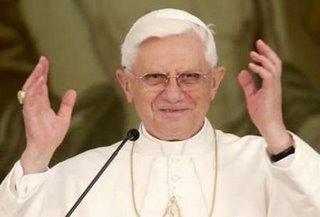The Mother Teresa Cause for Canonization
From the Franciscan Friars of the Renewal Site and Father Groeschel:
Today, although the world will hardly notice it, the Missionaries of Charity and their friends will be celebrating the new feast day of Blessed Teresa of Calcutta. September 5th is the anniversary of her death, and at present is acknowledged as her feast day. What a beautiful commemoration. Father Andrew and I had the great privilege of offering Mass for Mother Teresa the day before she went back to India. We knew when we said goodbye to her that we would not see her again in this world.
It was one of the most remarkable and memorable events of my life. Mother Teresa was filled with joy and happiness and even laughter. She was telling us how many convents and how many sisters and Missionaries of Charity fathers and brothers there were. It was a simple direct rejoicing. Always before that I had noticed that Mother Teresa was quite somber. I always thought she was thinking of the troubles of the world. I found out later that her soul was in spiritual darkness for many years, which others did not know.
Please join the Missionaries of Charity and the Franciscans of the Renewal in commemorating the passing of this holy woman, who is not only a saint in my eyes, but a prophetess. She has so much to teach us now.

